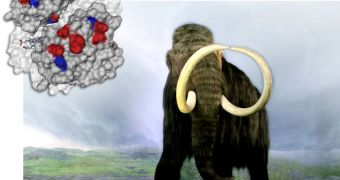Prehistoric mammoths are renowned for living mainly in Siberia and North America, in climates with freezing temperatures, which lingered below the freezing point of water for most of the year. Researchers have always been curious as to how these animals' blood adapted to these challenging conditions, especially in terms of oxygen transport. In order to get a better idea of how this essential process took place, experts recently managed to take a closer look at the oxygen-transporting protein, by injecting 43,000-year-old genes into cultures of the Escherichia coli bacteria, ScienceNow reports.
This type of study is “no different from going back 40,000 years and taking a blood sample from a living mammoth,” explains University of Manitoba in Canada biologist Kevin Campbell. He explained that his team was able to get its hands on a sample of ancient mammoth genes, harvested from a fossil preserved in the Siberian permafrost. Campbell, who specializes in the physiology of mammals, says that he has been waiting for such a moment for the better part of a decade. He became interested in mammoth studies after watching a TV show depicting how these animals become encased in ice.
Together with DNA expert Alan Cooper, who is based at the University of Adelaide, in Australia, Campbell was capable to scout the samples and identify the genes coding for hemoglobin in the ancient mammal. The reason why the protein was then injected in E. coli cultures was to force the bacteria to produce hemoglobin in the tightly-controlled confines of scientific laboratories. The team drew inspiration for processes used to produce insulin artificially, which also rely on bacterial cultures.
“I figured if E. coli can make perfect human hemoglobin, why can't it make mammoth hemoglobin?,” Campbell says, adding that the hemoglobin proteins must be identical to the ones the actual mammoths produced. They then compared their results with blood samples procured from Asian and African elephants, the closest living relatives of the giant mammals. In a paper published in the latest online issue of the highly-regarded journal Nature Genetics, the researchers say that the main difference between the two types of hemoglobin is that the one produced by mammoths releases oxygen steady at any temperature, whereas the one elephants synthesize releases more oxygen in warmer temperatures.

 14 DAY TRIAL //
14 DAY TRIAL //